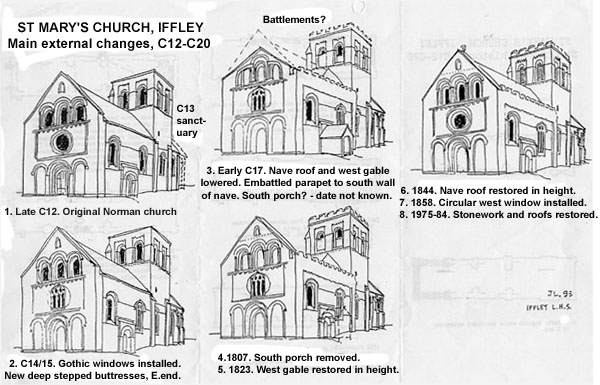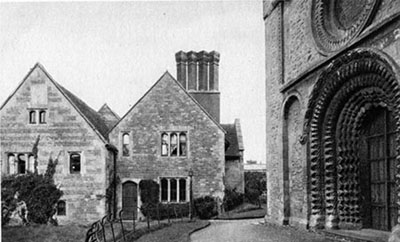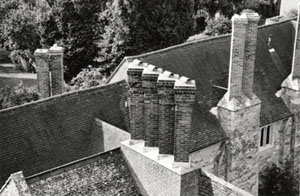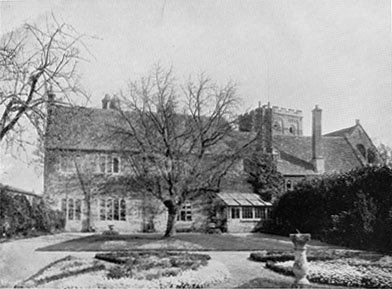See Nineham, R., Iffley Church
and Medieval Life. ILHS Publication No 2.
See the church website www.iffley.co.uk.
St Mary's church was built
in the 1170s when Iffley Manor was held by the Norman family of St Remy.
The scale and the splendour of it seem out of all proportion to the unimportant
village it served. The time was one of conflict between crown, on the
one hand, and other sources of power, such as church, and nobility, on
the other. This splendour may have been intended to make a statement.
The style certainly reflects a European Christian culture that was above
a nationality.
In 1232, an anchoress set up her cell beside the church (i.e. a nun who
has a life of prayer on her own and not in a community). She was Annora
de Braose, of a noble family which had fallen foul of King John. She may
have paid for the Early English sanctuary which, about that time, replaced
the previous east end of the church, probably a small Norman apse. A 13th-century
grave slab now marks the most likely place for her cell outside the south-eastern
wall.

St Mary TheVirgin, Iffley,
old photo
.
Church carving detail,
© Toni Perrott

St Mary's Church architectural history, courtesy of John Leigh. with thanks.
Some parts of Iffley's huge Rectory may be as old as the church; some date from the 13th century and more from the 17th. The Archdeacons of Oxford normally let the Rectory and its estate to a tenant instead of using it to house the parish clergy. Few parish clergy could afford to live in it, while prosperous tenants might help to keep it in repair. Marshall was prosperous; he restored the house and also proved a good parish priest. Answering to an official enquiry in 1837, he said he held 149 acres in Iffley, including a farm south of the church. It was not until 1856 that the income of the Rectory estate was combined with the living, and that was through Marshall's forethought. In 1979, the house was divided in two; the north-western wing was taken by the Landmark Trust who let it as holiday accommodation; the south-western half was improved and kept as a rectory.


©Toni Perrott 2001

Rectory, garden and church tower, Taunt, c1900